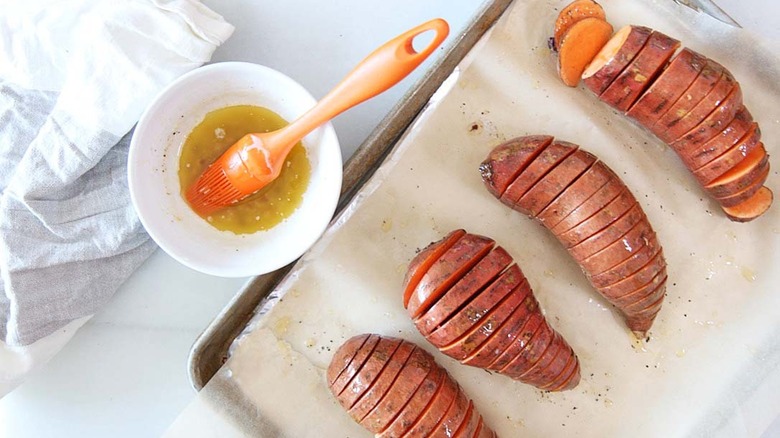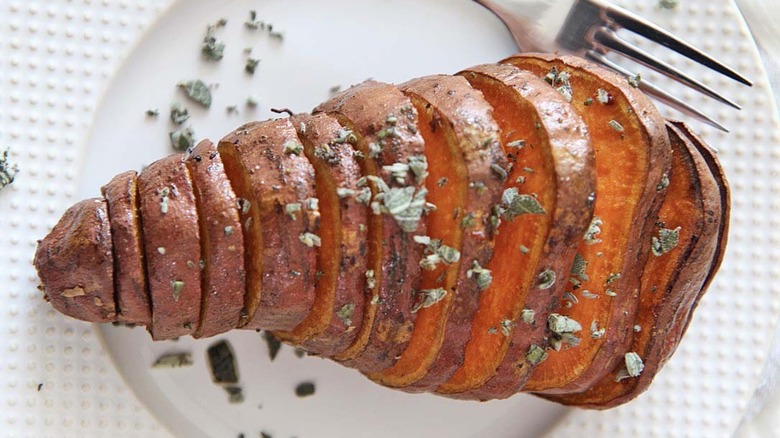Maple Syrup Is The Key To Elevating Hasselback Sweet Potatoes
As you begin to think about which dishes to include in your Thanksgiving lineup, consider adding maple hasselback sweet potatoes to the list. The addition of maple syrup creates a deliciously indulgent, slightly caramelized sweet potato. By slicing the tubers hasselback style (cut in thin, fan-like slices but not all the way through), the maple syrup gets the chance to mingle with every part of the potato, creating a subtle but sweet flavor in each bite.
If you're debating using real or fake maple syrup for this dish, use the real stuff for the best results. By using artificial maple syrup, you lose out on the robust, nutty flavors that come with the authentic variety. As a bonus, you'll know you're supporting hundreds of years of tree-tapping work while you enjoy your delicious meal. Real maple syrup is a great investment for the fall since you can use it in several maple-themed dishes.
What happens when you cook maple syrup?
We like to add our maple syrup to a butter mixture full of spices, before lathering it over all the crevices of the criss-cross-sliced potatoes. Cooking the sweet potatoes with maple syrup creates a beautiful, rich flavor and slightly sticky texture. When maple syrup is cooked, any additional water in the syrup evaporates, and the flavors become more concentrated. When the sugars in the maple syrup become caramelized they darken in color and develop a stronger, nutty flavor.
When selecting a maple syrup to use for your hasselback sweet potatoes, you'll want to go for one that is lighter in color as it will darken slightly while it cooks in the oven. While you won't cook the maple syrup in this recipe to a high enough temperature to produce maple candy, you do achieve a slight candying effect on your sweet potatoes. In the end, you get a product slightly similar to candied yams, but not quite as decadent.

